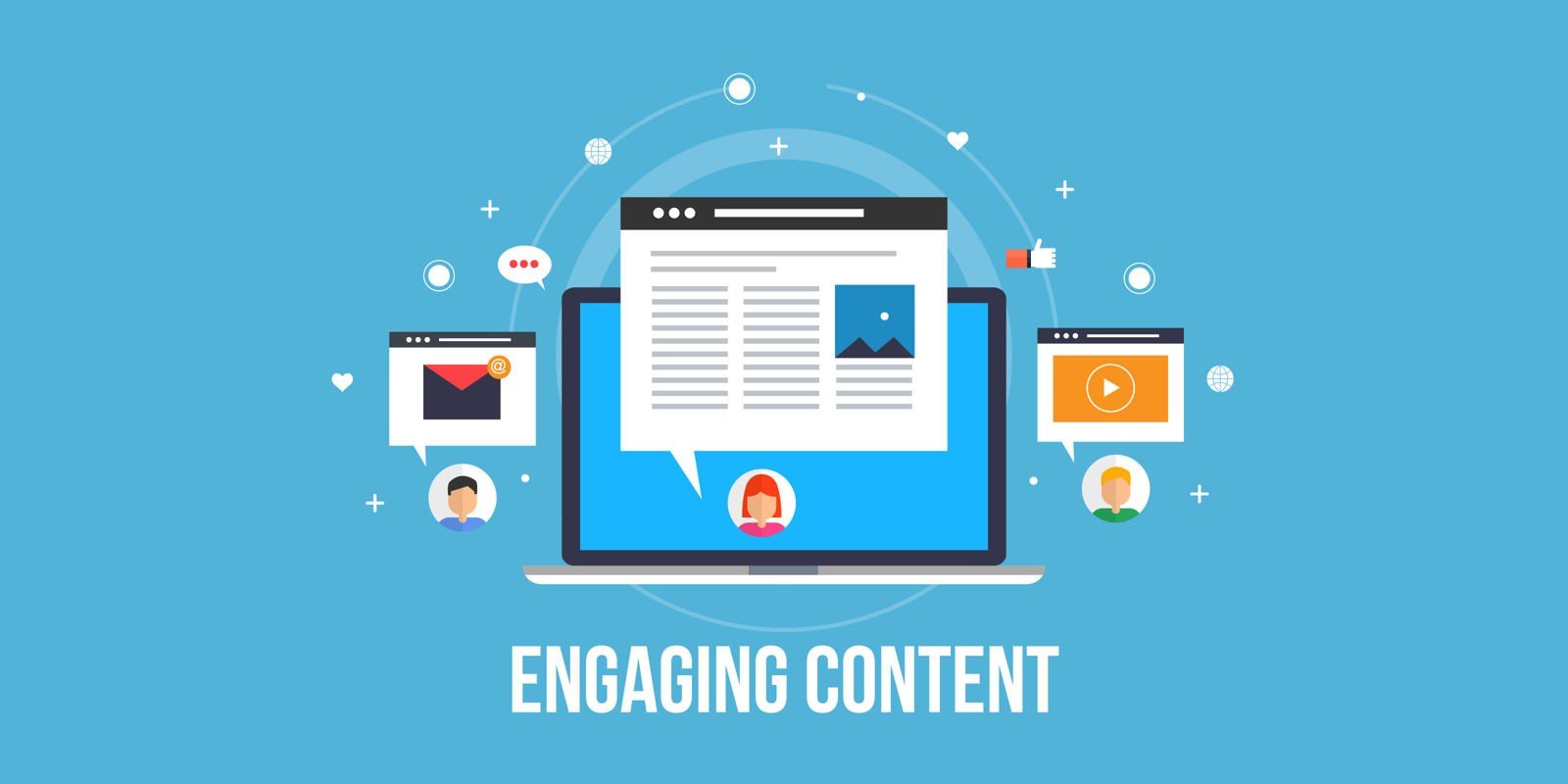Understanding how to convert website visitors into buyers or subscribers is a crucial part of online marketing. The sales funnel concept is central to achieving this goal. But what exactly is a sales funnel, and how can you create one that leads visitors straight to conversion, boosting your Return on Investment (ROI)? We’ll explain how you can do that in this article.
What Is a Sales Funnel?
A sales funnel is a marketing concept that maps out the journey a customer goes through when making any kind of purchase. The model uses a funnel as an analogy because a large number of potential customers may begin at the top end of the sales process, but only a fraction of these people actually end up making a purchase. As a customer passes through each stage of the funnel, it signifies a deeper commitment to the purchase goal.
Create Your Buyer Personas
Understanding your audience is the first step to an effective sales funnel. People differ significantly in their interests, behaviors, and responses to marketing. A one-size-fits-all approach won’t work. Instead, consider these questions:
- How old are your most dedicated customers?
- What type of language resonates with them?
- How persuasive should you be without alienating them?
Creating detailed buyer personas helps you tailor your content and funnel strategy. Utilise tools like Google Analytics to gain insights into your audience’s demographics and preferences.
More on this: Creating a Buyer Persona
The different stages of a sales funnel
To create an effective sales funnel, start by deeply understanding your target audience and the journey they take. Recognise their needs, behaviors, and how they typically go from becoming aware of your product to making a purchase. This understanding allows you to tailor each stage of the funnel to guide them gently toward conversion.
Create Awareness (Top of the Funnel – TOFU):
At this initial stage, your goal is to draw in your target audience.
- Attract Visitors with Quality Content: Utilise SEO principles to rank well in search engines. Create content that’s not only high-quality and relevant but also addresses the needs and interests of your audience.
- Utilise Social Media and Advertising: Leverage the power of social platforms and paid ads to extend your reach and funnel potential customers to your website.
Generate Interest (Middle of the Funnel – MOFU)
Now that you’ve caught their attention, it’s time to keep them interested.
- Educational Content: Provide blogs, ebooks, and webinars that delve into common questions and pain points. This not only positions you as an authority but also builds trust.
- Email Marketing: Use lead magnets to capture email addresses, then send targeted, valuable information to nurture leads down the funnel.
Decision (Bottom of the Funnel – BOFU)
As potential customers consider their purchase, provide additional support and proof of your product’s value.
- Product Demonstrations and Trials: Offer demos or trials to let customers experience your product first-hand.
- Testimonials and Reviews: Share stories and reviews from satisfied customers to build credibility and trust.
Action (Conversion)
Make the final steps toward purchase as seamless as possible.
- Streamlined Purchase Process: Simplify the buying process with clear, compelling calls-to-action and an easy-to-navigate checkout system.
- Strong, Clear Call-to-Action: Ensure users know exactly what to do next, whether it’s making a purchase, signing up, or getting in touch.
Post-Purchase (Retention and Advocacy)
The relationship doesn’t end at purchase. Post-purchase engagement is key to retention and referrals.
- Customer Support: Offer excellent support to encourage repeat business and positive word-of-mouth.
- Feedback and Surveys: Request feedback to continuously improve your product and the sales funnel itself.
Analyse and Optimise
Continuously monitor and refine your funnel.
- Track Metrics: Use analytics to understand how well each stage is converting and where drop-offs occur.
- Test and Tweak: Regularly experiment with different elements of your funnel and optimise based on performance.
Expanding Your Sales Funnel with Digital Marketing Strategies
In the digital age, your sales funnel can greatly benefit from various online marketing strategies. These strategies not only drive traffic to the top of your funnel but also engage and convert users as they move through it. Let’s explore how Facebook Ads, Google Ads, SEO, and organic social media can play a pivotal role in your sales funnel.
Leveraging Facebook Ads
Facebook Ads are a powerful tool for targeting and attracting potential customers into the top of your sales funnel. With its vast user base and detailed targeting options, you can:
- Reach a Specific Audience: Use demographic data, interests, behaviors, and more to target people who are most likely to be interested in your products or services.
- Create Engaging Content: Use eye-catching images, videos, and calls-to-action to draw users in. Tailored ads can address the specific needs and interests of your audience, guiding them further into your funnel.
- Retarget and Re-engage: Implement retargeting campaigns to bring back users who have interacted with your site but haven’t converted, nudging them down the funnel.
Utilising Google Ads
Google Ads can capture the attention of users who are actively searching for solutions that your business offers. They can be particularly effective in capturing users in the decision stage:
- Intent Targeting: Users searching on Google often have high intent, making them valuable prospects to capture into your funnel.
- Various Ad Formats: Whether through search ads, display networks, or YouTube ads, you can engage users in multiple ways, depending on where they are in the funnel.
- Measurable Performance: Google Ads provides robust analytics to measure the performance of your campaigns and understand how users are interacting with your funnel.
Enhancing your funnel with SEO
Search Engine Optimisation (SEO) is crucial for driving organic traffic to your website and filling the top of your sales funnel. SEO involves optimising your website content to rank higher in search engine results for relevant keywords.
- Long-term Traffic: Unlike paid ads, the traffic from SEO is continuous as long as you rank highly.
- Building Trust: Users often trust organic search results more than ads. Ranking highly in search results can lend credibility to your business and content.
- Aligning with User Intent: By targeting specific keywords, you can attract users who are looking for exactly what you offer, ensuring a higher quality of leads entering your funnel.
Organic Social Media
Organic social media marketing is about using platforms like Facebook, Instagram, Twitter, and LinkedIn to build relationships and interact with your audience. It’s a more subtle way of guiding users through your sales funnel.
- Community Building: Create a community around your brand. Engaged followers are more likely to trust your brand and enter your sales funnel.
- Content Sharing: Share valuable and engaging content that encourages users to visit your website and learn more about your offerings.
- Customer Interaction: Directly interact with your audience, answer questions, and provide support. This personal touch can make users more comfortable moving further down your funnel.
By combining these digital marketing strategies, you can effectively guide more users through your sales funnel. Each strategy serves a different purpose and stage within the funnel, but together, they create a comprehensive approach to attracting, engaging, and converting potential customers. Remember, the key to a successful sales funnel is not just attracting users but providing value and solutions at every stage, leading them naturally toward a purchase.
More on this: Creating an efficient social media marketing strategy
Develop A Plan To Test Your Sales Funnel
Creating a sales funnel isn’t a set-and-forget strategy. To ensure its effectiveness, you must embrace the concept of continuous optimisation. Regular testing and tweaking can transform a good sales funnel into a great one, significantly boosting your conversion rates and customer satisfaction.
Understanding the Need for Regular Testing your Funnel
Sales funnels are dynamic entities. Customer behavior, market trends, and competitive landscapes are always changing, and what worked yesterday might not work today. By regularly testing your funnel, you can adapt to these changes, ensuring your strategy remains effective and relevant.
Key Areas to Test in Your Sales Funnel
- Landing Pages: These are often the first point of contact for your potential customers. Test different elements like headlines, images, and calls-to-action to see what resonates best with your audience.
- Navigation and User Flow: Ensure that the path from the landing page to the final conversion is as smooth and intuitive as possible. Test different navigation structures and page layouts to find the most user-friendly design.
- Content and Messaging: The way you communicate with your audience can significantly impact conversion rates. Experiment with different messaging, tone, and content types to see what drives engagement and moves users through the funnel.
- Offers and Incentives: Sometimes, tweaking the offers or incentives can lead to better conversion. Test various discounts, free trials, or bonus items to determine what makes your visitors click the ‘buy’ button.
Tools and Techniques for Testing Your Sales Funnel
- A/B Testing: Also known as split testing, A/B testing involves comparing two versions of a web page to see which one performs better. By changing one element at a time, you can understand its impact on user behavior.
- Multivariate Testing: This is similar to A/B testing but allows you to test multiple variables at once. It’s more complex but can provide deeper insights into how different elements interact with each other.
- Heatmaps and User Recordings: Tools like heatmaps show where users click, move, and scroll on your pages, while user recordings provide real-life examples of user interactions. These tools can reveal where users get confused or drop off.
- Customer Feedback: Sometimes, the best way to understand how to improve your funnel is to ask your customers directly. Use surveys or feedback tools to gather insights about their experience.
Analysing the Results
After conducting tests, it’s crucial to analyse the results carefully. Look for patterns and trends that indicate why certain elements are more effective than others. Use these insights to make informed decisions about which changes to implement permanently.
The Cycle of Continuous Improvement
Optimising your sales funnel is an ongoing process. Even after making changes, it’s important to keep testing and refining. Markets and audiences evolve, and your funnel should too. By making continuous optimisation a habit, you’ll stay ahead of the curve and maintain a funnel that consistently delivers results.
Additional tips for creating your sales funnel
Cater to Both New and Repeat Customers
Differentiating between new and repeat customers is vital. While exciting offers may attract first-time visitors, they might not resonate with loyal customers. Understand what appeals to each group and tailor your funnel accordingly. For repeat customers, focus on content that re-engages and excites them about your offerings. Use tools like Google Analytics for retargeting and to serve customised content based on past behavior.
Implement Smart Calls to Action (CTAs)
CTAs are the signposts guiding users through your funnel. They should be clear, compelling, and relevant to the stage of the funnel the user is in. Smart CTAs can display different messages based on variables like visitor location, language preference, and whether they’re new or returning customers, ensuring a personalised experience.
More on this: CTA Best Practices For Better Conversion Rates
Regularly Publish Engaging Content
Engaging content is the lifeblood of an effective sales funnel. Regular blog posts, updates, and news keep both new and returning visitors interested and engaged with your brand. This content should provide value, answer questions, and solve problems, guiding users naturally towards conversion.
Elevate Your Strategy with Expert Assistance
Crafting an effective sales funnel is a crucial step in your digital marketing journey, but you don’t have to navigate this path alone. Our team offers expert digital marketing services in Melbourne, ready to guide you through every stage of your funnel—from awareness to conversion and beyond.
We understand the nuances of the local market and are committed to tailoring strategies that resonate with your target audience. If you’re looking to boost your online presence and drive meaningful results, reach out to us. Let’s work together to create a sales funnel that not only meets but exceeds your business objectives. Contact us today to take the first step towards your digital success.



















